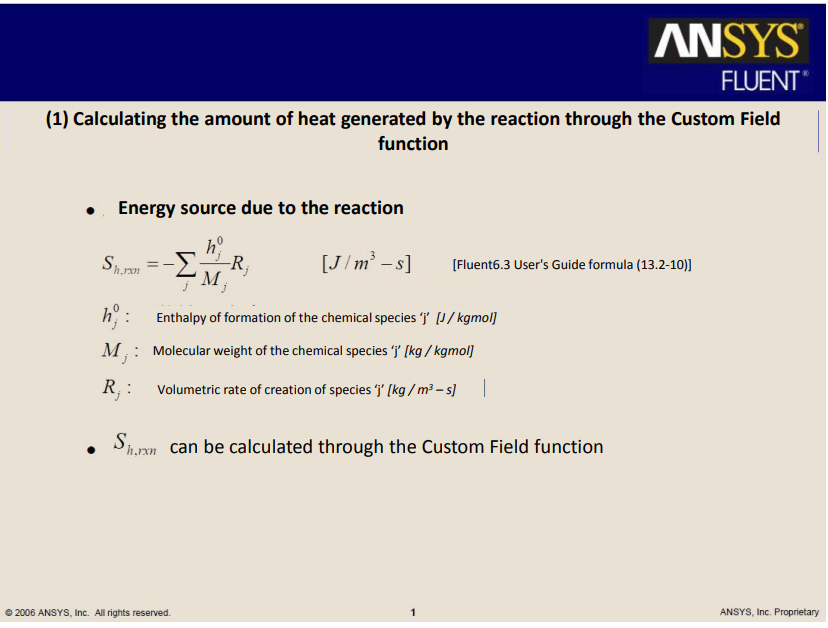-
-
November 26, 2024 at 3:22 am
ll00023
Subscribera previous thread discuss the dimension of heat-of-reaction.
https://innovationspace.ansys.com/forum/forums/topic/dimension-of-heat-of-reaction/
see the dimension of Rj/Mj is (mass/volume)/(mass/volume), hj - J/kg, right?
Sh's dimension is J/kg.
in the previous thread, you said, watt is originated from the solver's perspective. I don't understand this.
for a local view, it should be a volumetric result, even for a node. the node value could represent a local volumetric value in reality, right?
another thing you mention is: even though the unit is watt, it actually represents W/m3, right?
the last question is: since the volumetric value is needed here, instead of the value from the point of solver, why ANSYS fluent didn't add the variable directly in the software?
Thank you.
-
November 26, 2024 at 1:47 pm
Rob
Forum ModeratorStuff reacts and heat is released, that will be Watts. But, we may then report that based on cell volume, but in reality we may consider a reactor volume or mass of reactants. Hence you may need to make a distinction between experimental data and Fluent results as in CFD we have different information.
Not sure about the last point.
-
November 26, 2024 at 7:11 pm
ll00023
SubscriberI found a source of the heat-of-reaction dimension.
So the heat of reaction variable does show the result based on volume (W/m3). Is this an inconsistency?
since I need to eliminate mesh's impact on the result, is mesh independent test enough for me to say : heat of reaction is not affected by mesh size, just like temperature?
or how to eliminate it in other ways?
you hit the point: the distinction between experimental data and Fluent results.
heat of reaction is Fluent results; why Fluent does not include the variables for experimental data directly?
I need to study the concepts of reaction and heat release further to understand you better.
Thank you.
-
November 27, 2024 at 10:24 am
Rob
Forum ModeratorMesh resolution/independence will ensure you capture the species, thermal and flow field & gradients. That in turn resolves the heat of reaction accuracy.
CFD and experiment are different. In an experiment I may know I've released 160W, I can get that from CFD but I can also find where that heat was released within the domain. Both are useful.
-
- You must be logged in to reply to this topic.



-
3432
-
1057
-
1051
-
896
-
892

© 2025 Copyright ANSYS, Inc. All rights reserved.











